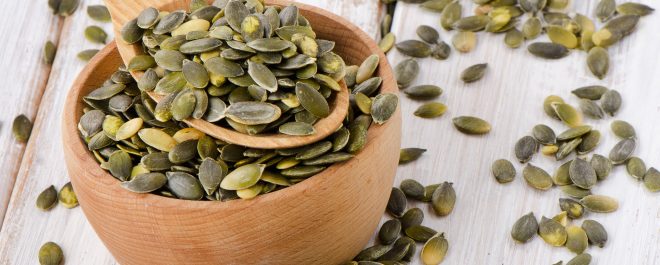
Clinic News
As we welcome many of you back from shielding we would like to reassure you that nearly all of the safety measures we have in place will stay for quite a while yet. So even if you have had both your vaccines and are happy to now venture back out into the world, our priority is to continue to keep you safe when we see you. This means: online self screening, hand sanitizing, temperature taking, masks, gloves and gowns will still be inplace as will our super cleaning regime.
We are also very excited to have Ruth and Jenny back on the team from 12th April. They have been busy filling up their diaries so if you haven't got your appointment booked in yet get cracking by phone or online.
Remember you can always book, change or check you appointments online using the Jane app and your registered email address to access your account. Use this link: Appointments – Beeston Chiropractic Clinic
Anne the Acupuncturist is hoping to return in May ... watch this space.
Sadly, we seem to be having a small security issue which we are addressing temporarily by locking the reception front door. Please knock when you arrive and we will let you in. We are very sorry for the inconvenience but we need to keep our team safe. We are looking into a new security upgrade in the next week or so, so please bear with us - we are sad that these measures have to be put in place.
On a very lovely note, we would like to congratulate Lucy on completing her Pre-registration Training - she is now a fully enrolled chiropractor so there is no stopping her now.
Check out some new products we are stocking this month and articles about health, posture and diet.
Don't forget we are closed for the bank holiday weekend, will reopen on Tuesday 6th April from 11am and Alex is away on annual leave until the 12th April too.
Remember the new clinic hours Monday to Wednesday 11am to 8pm, Thursday and Friday 8am to 5pm and Saturday 8am to 12 noon.

Let the sports resume !
With the easing of lockdown spring has arrived and with it the added need for us to take extra care of our necks, backs and spines to avoid pain and injury…
If the arrival of sunshine has caused you to pack away your winter jumpers and, instead, pull out your racket, shin pads or helmet for a bout of summer activities, remember to take note of these simple steps to ensure you steer clear of any unwanted pain and discomfort.
RUNNERS can avoid injury by regular stretching of the tendons and wearing good shoes with shock-absorbing features.
RACKET-SPORTS PLAYERS should be wary of playing through the pain of Tennis Elbow. Tennis Elbow is in fact an overuse injury, caused by repetitive movements at the wrist forcing the thumb outwards and the palm upwards. Continuing to play will only exacerbate the problem.
GOLFERS are particularly prone to lower back injuries. Graphite clubs and soft spiked shoes will help absorb the shock which can bring on back injury. Your chiropractor can suggest appropriate warm-ups and exercises, and help you work on an alternative swing.
GARDENERS commonly suffer from aches and pains, but they can avoid lower back trouble by kneeling on one leg rather than bending from the hips, keeping the back hollow whilst digging, and varying tasks throughout the day to avoid repetition injury.
DIY, like gardening, is often far-removed from everyday activities. When the sun is shining many will want to get out in the garden and get on with the long list of DIY jobs that have piled up over the winter months. Enthusiasts often injure their back by in habitual exertion, so when lifting, take the weight on bent legs, keeping the back straight.

Core Stability Helps Prevent Back Pain
If you’re following the trends in exercise and fitness, you’ve probably heard the phrase “core strength” or “core stability.” These terms refer to the muscles of your abdominals (stomach) and back and their ability to support your spine and keep your body stable and balanced, helping to prevent back pain.
The core muscles lie deep within the trunk of the body. They generally attach to the spine, pelvis and muscles that support the scapula. They stabilise these areas to create a firm foundation for co-ordinated movement of the legs and arms.
Core stability is also needed in everyday life, helping to keep you fit and to prevent injury when you are lugging those heavy shopping bags or doing the ironing. Rises in back pain incidence have been linked to the sedentary lifestyle that many of us lead. How about neck and shoulder pain? Time spent hunched over the desk instead of getting out and about can mean that we don’t pay enough attention to posture, and the muscles of those crucial “corset” muscles.
To strengthen your core stability:
- Start by lying on your back with knees bent.
- Your lumbar spine should be neither arched up nor flattened against the floor, but aligned normally with a small gap between the floor and your lower back. This is the “neutral” lumbar position you should learn to achieve.
- Breathe in deeply and relax all your stomach muscles.
- Breathe out and, as you do so, draw your lower abdomen inwards as if your belly button is going back towards the floor.
- Hold the contraction for 10 seconds and stay relaxed, allowing yourself to breathe in and out as you hold the tension in your lower stomach area.
- Repeat 5-10 times.
Bear in mind the following points:
- Do not let the whole stomach tense up or your upper abdominals bulge outwards, as this means you have cheated by using the large rectus abdominus muscle (the six-pack).
- Do not brace too hard; just a gentle contraction is enough. Remember it’s endurance not max strength your are trying to improve.
- Do not tilt your pelvis nor flatten your back, as this means you have lost the neutral position you are trying to learn to stabilise
- Do not hold your breath, as this means you are not relaxed. You must learn to breathe normally and maintain the co-contraction.
- Use your fingers for biofeedback on either side of your lower abdomen to feel the tension.
Once you have mastered the abdominal hollowing lying on your back, practise it lying on your front, four-point kneeling, sitting and standing. In each position get your lumbar spine into neutral before you perform the hollowing movement. If you feel any pain or discomfort while doing these exercises, then stop immediately and seek medical advice before continuing.

Take a Stand on Back Pain
Could standing work desks be the answer to unwanted back pain?
Recent workplace trends show that many employers are now opting for standing work areas, rather than the more conventional seated desks, in a bid to prevent their workers suffering from back pain and to help increase their productivity in the office.
But are these innovative standing workspaces really the way forward to a healthy back, free from pain and discomfort? Here are three things to bear in mind if your work place decides that standing, rather than sitting, is best way forward:
- Standing tall
Sitting and bending forward (as you tend to do in an office seat) can put twice as much load on your spine as standing does so standing desks could well be a better option for the office.
- Take a break
While standing, however, it is important to remember that you should still take regular breaks as you would when sitting at a desk. Being stuck in one position, even if it is in a ‘good posture’, is not advisable.
- The best of both
A desk set up that allows you to stand as well as sit is the most ideal situation, as this gives you the option to change position regularly. The more adjustable your desk set-up is, the more likely you are to find a position that suits you.

Foods can help relieve pain
The primary factors that can cause or worsen pain include poor posture, injury, too little (or too much) activity, and specific conditions such as arthritis. However, what you eat can also help to manage or relieve pain, or even prevent it injury in the first place.
Here are some of our top nutrition tips for managing pain.
- Ditch the processed foods
Processed foods generally refers to most things that come in a packet with a list of ingredients: from biscuits to ready meals to breakfast cereals. They often contain little in the way of naturally occurring vitamins and minerals. They may worsen inflammation and pain because they contain higher levels of unhealthy fats – in particular, processed omega-6 fats and ‘trans’ fats, which have pro-inflammatory properties. They often contain quickly absorbed sugars or refined carbohydrates too, which may exacerbate inflammation when consumed in excess.
In contrast, ‘real’ foods are as close as possible to how they are found in nature. They can include whole vegetables and fruit, nuts and seeds, whole grains, fish, eggs and meat (whole cuts, not ‘deli’ or processed meats). These foods naturally contain higher levels of nutrients that can help reduce inflammation and pain, such as those we’re going to look at in more detail below.
- Eat magnesium-rich foods
One of the nutrients that may help to manage pain and inflammation is magnesium. Magnesium helps our muscles to work normally, including helping them to relax, which in turn helps to avoid or relieve muscle tension that can contribute to pain. This mineral is also important for the nerves.
Magnesium is found primarily in whole unprocessed plant foods – especially green leafy vegetables such as spinach and kale, seeds and nuts, and whole grains including rye and buckwheat.
- Include oily fish
Oily fish such as mackerel, salmon, sardines, herring and anchovies are high in omega-3 fats. These fats have anti-inflammatory properties and therefore may help to manage pain. The specific omega-3s in fish (EPA and DHA) can be more beneficial than the types of omega-3 found in seeds such as flax seeds.
Aim to eat a serving of oily fish around three times a week. These can include tinned sardines and salmon as long as they do not contain added vegetable oils (olive oil is fine). Note that ‘omega-3 fish fingers’ are not a good source of omega-3 fats – stick to the real thing!
- Get plenty of vitamin C
You may know vitamin C for its role in the immune system. But in fact the primary role of vitamin C is in making collagen – a protein that forms the basic structure of most of the body’s tissues, including the bones, joints and muscles. If your body can’t make collagen properly, these tissues will lose strength and function, contributing to not only day-to-day pain but also potentially painful conditions such as arthritis and osteoporosis.
Eating a variety of vegetables and fruit is the best way to get enough vitamin C. Although ‘five-a-day’ is the well-known recommendation, we should be aiming for at least seven portions a day, primarily of vegetables, in order to get good amounts of vitamin C and antioxidants. Some of the best sources of vitamin C include peppers, kale, broccoli, kiwi fruits, Brussels sprouts, watercress and red cabbage. If you can, get your veg and fruit from a local producer (e.g. a farmer’s market) as it can lose its vitamin C when it’s stored or transported for long periods of time.
- Include anti-inflammatory spices
The spices ginger and turmeric in particular can have anti-inflammatory and pain-relieving properties. Use fresh ginger and powdered turmeric in your cooking whenever you can, make fresh ginger tea with a grated thumb-sized piece of ginger. If you have a good vegetable juicer you can even make fresh ginger juice to sip on – but watch out, it’s strong!
- Try avoiding nightshades
The ‘nightshade’ or solanaceae vegetables may worsen inflammation and pain for some people. These are aubergines, tomatoes, potatoes (not sweet potatoes), and peppers – including chillis and all types of chilli powder (cayenne, paprika etc.). If you’ve implemented the other changes for at least three months and not noticed a significant improvement in your pain, then try eliminating the nightshade vegetables.
- Consider eliminating gluten
Gluten is a protein that’s found primarily in wheat, barley and rye. The most severe reaction to gluten is coeliac disease, where the sufferer has to avoid gluten for the rest of their life. But some people who do not have coeliac disease may also react to gluten in a less severe way, which can contribute to inflammation in the body. If you’re cutting out gluten it can be best to work with a nutrition practitioner (e.g. a nutritional therapist) for support to make sure you’re not missing out on any nutrients.

Do You Feel Dizzy For No Reason?
Most children get a real thrill out of making themselves dizzy. They’ll spin round and round as fast as possible and then collapse in a heap of laughter and giggles. However, when someone suddenly becomes dizzy for no apparent reason, it can be a very frightening and debilitating experience.
Dizziness is the third most common complaint in general practice, yet most people don’t know why it happens. Our eyes, ears and nerve endings in our joints all combine to send signals to the brain telling us where our body is in space. If these signals are interrupted or the wrong signals are sent, then we can get dizzy. There are a number of different reasons why we can feel dizzy. Some of these include more serious trauma to the head and/or neck.
People are sometimes confused between dizziness and vertigo. Dizziness can be described as a feeling of light-headedness, whereas with vertigo, you either feel as if the room is spinning or you yourself are spinning. By the age of 70, about 30 per cent of people have experienced vertigo it at least once. If you think that you have experienced vertigo, then it is best to seek medical advice.
We treat all conditions that affect any muscle or joint in your body, from your head to your little toe! One of the most common complaints that we treat is back pain and Chiropractic is recommended by the government authority, the National Institute for Clinical Excellence (NICE) for acute and chronic back pain. Some of the other conditions that we treat are neck and headache, shoulder pain, leg and hip pain, knee and foot pain, sciatica and arthritis. Our registered Chiropractors all have at least five years of training. Treatment costs can be covered through most health insurers. If you are in any doubt, we are always very happy to talk with you on the phone to see if your condition will respond well to Chiropractic treatment. Call the clinic now to arrange an appointment time that works for you. 0115 9225085 If you would like to opt-out of receiving these newsletters please follow the unsubscribe link below, email alex@beestonchiropractic.co.uk or let us know at your next appointment.






